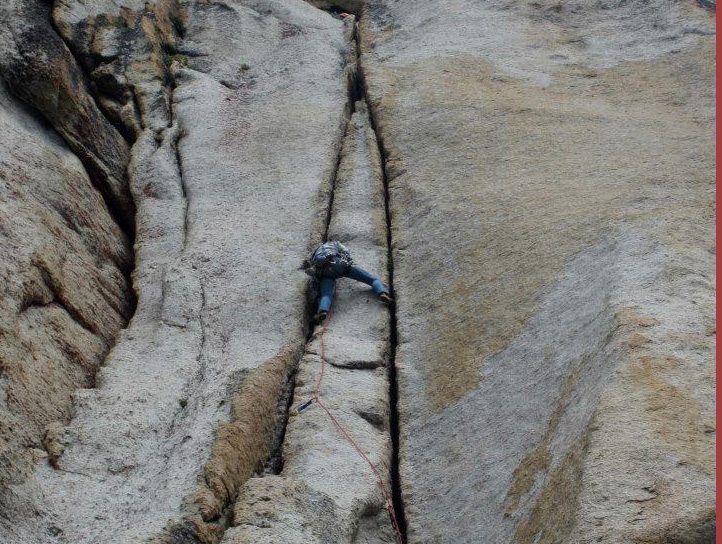As a business consultant I am painfully aware of the inherent risk in starting/growing a company. I work with entrepreneurs from cradle to grave; of course hoping the grave refers to a planned sale or merger. However, this week the grave that occurred was undesired. After 26 years in business my long-term client was forced to close shop.
My mind was heavily weighted by the events of the week. I kept wondering why the owner simply refused to listen to the warnings. Why he held tightly to the delusional belief “all we need is more sales” while ignoring the fact that their business model no longer made sense. Unlike a sudden and unexpected tragedy, business failure does not require coming to terms with an unknown why. There are usually warning signs along the way, time for management to make changes before the foundation begins to decay.
I was mentally exhausted but fortunately it was time for me to enter my other world; an existence that most people would find strange. In my dual lifestyle, I spend part of the week living in a high-rise in Los Angeles working as a business consultant, speaker and author. For the remaining portion, I live the life of a rock climber. I spend my time suspended far above the ground, living in campsites and sleeping in my jeep. In actuality, these two lifestyles are really not that different. They both require the ability to accurately assess a situation and develop a strategy. Whereas growing a business involves sales and profitability targets, climbing goals are categorized by the level of climbing difficulty. It doesn’t matter how it is defined—both take smarts, guts and determination.
Yes, it had been a very challenging week and it was time to put business thoughts on hold. I jumped into my Jeep Wrangler, affectingly named Jasper and began my 3 hour drive to Joshua Tree Park. California offers the best all-year round climbing. When temperatures become unfavorable we simply move to another destination. At the beginning of the Joshua Tree climbing season, I had led a few climbs at the grade 5.10a. For a trad climber (meaning you place gear for protection as you climb) having reached this level was a great accomplishment. However, it also meant increased risk. In this, climbing is similar to growing a business. An owner decides to make a big investment hoping it will provide the desired rate of return (while at the same time fearing it could be a fatal mistake).
Spring had arrived, temperatures were increasing and Joshua Tree season was soon ending. I was satisfied with my achievements, having led a few 5.10b’s. Nevertheless, before moving to my next destination I had one more climb on my list; a true classic and noteworthy route called Illusion Dweller. It was a stout 5.10b consisting of a small crack line, tiny hand placements and a right slanting angle that added to the difficulty. The “crux” (most difficult part of the climb) is located near the top. After climbing the bottom section you are thoroughly exhausted yet you have to hoist your body onto the top of a bulging rock.
Strong Leaders Think Strategically
When a rock climber is in the “lead position” they wedge different types of gear into the rock as they climb. The gear (consisting of cams and nuts) are then attached to a rope which is connected to their harness. At the other end of the rope the “follower” has a belay device that will allow them to cinch down on the rope if the leader takes a fall. After the leader places gear and begins climbing again, the distance between the last piece of gear and the next piece they had placed is unprotected. Therefore, if the leader falls the distance will equal the amount climbed over the last piece—plus that distance again given the amount of rope that is still out (that is if is the piece was placed properly and holds). A leader fall is the most dangerous and can consist of 20-30 feet or more. For this reason, those that lead in rock climbing must approach climbs strategically. Not having a thorough understanding of the territory or being underprepared could be disastrous.
The same is true in business. A strong leader can catapult an organization to overcome great obstacles. To the contrary, a lack in leadership can cause disastrous consequences. The business owner of the failed company mentioned earlier severely lacked leadership skills. He was haphazard in his decision making and had a “do anything to win” manifesto. When faced with a competitive bid he would agree to terms that the company could not meet, such as foregoing a deposit or providing extending payment terms. His “at all cost” behavior placed the company in financial jeopardy. Eventually the company experienced a cash flow crisis, which was the beginning of the end. If he had applied a lead rock climber’s mindset to his business decisions, he would have been more thorough in his assessments and considered the long-term repercussions of his choices.
Proper Assessment followed with a Systematic Approach
The safest form of climbing is to follow a leader. This involves removing the gear placed by the leader as you climb. A follower begins climbing only after the leader has made it to the top and has secured the rope. The rope is always kept tight so falls consist of only a few feet or less. Last year when I was following Illusion Dweller I fell when attempting the crux. This time I was going to be in the lead position and the risk from a fall would be much higher. Similar to being an employee and then starting your own business—the risk increases but so does the reward.
Assessment is an important part of climbing. Climbers must ensure they are not taking on more risk than necessary. They must evaluate each section of the rock to determine the available options for placing gear (referred to a protection). They also must consider the level of difficulty in comparison to their physical abilities. If the route is beyond their lead ability, they will ask a more experienced climber to lead the route and take a follower position. The skills and experience gained as a follower can then be applied as a leader at a later date.
Business owners could benefit from a similar approach. Instead they often forge ahead without fully analyzing the resources required and inherent risk. If they took the time to do a thorough evaluation, honestly assessed their skill set and sought additional expertise as needed; they would experience a greater success rate. Interestingly, both climbers and business owners fail to step back and assess for the same reasons—false beliefs and/or fear. I have seen many business owners make a decision based on emotions rather than fact-based evidence. For example, my client would often accept low margins in fear of losing a sale. He believed “any sale was better than no sale”. This proved to be a fatal decision. The projects they accepted were not profitable enough to cover the cost to produce and overhead. As climbers, if we approach a climb with false beliefs or anxiety, we will usually fail. Such myopic vision has never worked for climbers or entrepreneurs.
Established systems in both rock climbing and business serve the same purpose—they are designed to keep you alive. In rock climbing a system failure can mean death, without the ability to file Chapter 11 for reorganization. Therefore, a series of detailed procedures with safety checks are performed by all participants. In business, systems exist to monitor the financial health of the company. A few simple calculations, such as Gross Profit Margins, Profitability Analysis and Sales: Cost ratios, can be monitored routinely. These systems provide an advanced warning sign, with ample time to make required changes. Unfortunately many smaller companies do not deploy such systems or simply ignore results. I could not imagine a climber acting in the same fashion, continuing to climb once a failed system became known. They would stop, reassess and make the appropriate changes. If my client had modeled a rock climber’s approach, the week’s events would have been different. Instead when alerted to concerns, he chose to continue as he had for the last 20 years.
Risk Mitigation—A Crucial Part of the Process
As I approached the climb I looked for ways to mitigate the risk—similar to the way an entrepreneur would approach an business investment. I tried to identify are areas of difficulty looking to see if I could place a good piece of protection in the rock before the move. I knew it was going to be hard, climbs rated 5.10b’s are, but I felt it was within my ability to climb.
After a difficult move at the start, I was progressing well. The climb required a lot of physical strength. I did not feel as strong as usual, which was directly related to the stress experienced from the challenging work week. About half way up I found a rest spot, meaning there were large enough foot and hand holds to rest on my skeleton rather than using my muscles to secure me to the rock. I gladly accepted this break and begin to inspect the next part of the climb.
While in my relaxed stance, I placed a piece of gear in the rock for protection and started to move to the next crux. I reached for the next hold, a hand jam in a widening section of rock. I could not get a solid placement and my body positioning felt awkward. I realized this move was going to be much harder than I thought. I considered the last piece I placed—was it good enough to hold? Realizing I may take a fall I down climbed and inspected it one more time. By just moving it 1/8 of an inch the placement improved. I took another deep breathe, screamed down to my belayer “watch me” which means I could fall.
I went for the move but just could not get my body positioning right. Gravity was quickly becoming my enemy. I began to slip but felt I could make a power move and use my strength to pull through. I mustered everything I had, even yelling out loud—come on Lori! (A self-command that usually provides a brief burst of energy similar to stepping on the accelerator of a car but nothing came.) Suddenly I realized I was losing the battle. I was shocked. I really thought I could pull through. I was now almost 10 feet above the last piece of protection! Suddenly I began losing my grip and the next thing I knew I was falling—falling far.
Someday I want to write a book titled, “Everything I learned, I learned on the way down”. I am not sure whether it would be about business, rock climbing or both. I was about to learn from my fall and during the week my client had learned a hard lesson as his business began heading south. From this vantage point they both seemed interconnected.
I remember falling past the last piece I had placed. It is interesting how much the mind can assess in such a short time frame. I thought about the decision to adjust the piece before making the final move. I found comfort in this, hoping the piece would hold when the rope became tight. Next I saw myself falling past the second piece I had placed. Knowing the climb was hard I placed several pieces closer together than I usually would. Redundancy with backup systems is common in rock climbing. I knew that piece was solid and would provide a back-up if the first one failed, like Plan B in business.
I could hear the rope rustling through the slings as I continued to fall. I thought to myself, I should be stopping soon. I then noticed the rope getting tight around the top piece placed. I felt a soft tug—it caught me. The systems worked. I had just fallen 20 feet, my longest leader fall to date, yet I was alive and unhurt.
I rested for a moment and then completed the climb. This time with the experience gained I approached the crux differently. By angling my body to the right, only a slight modification, gravity was no longer my enemy. I made the move, then passed the final crux at the roof and made it to the top. I clipped in to the anchor and yelled down to my friend, off belay and thanks for the catch.
Falling is part of rock climbing, especially when climbing at higher grades. However, the risk only increases slightly if you follow proper climbing technique. Starting a business also entails risk but with proper systems it can be mitigated. What can a business owner learn from a rock climber? They can adapt a climber’s approach: develop a strategy that includes redundancy (Plan B), stop and assess performance rather than simply pushing through and surround themselves with competent people, those who can assist in a catch if needed!
Lori educates and inspires entrepreneurs. Her company Business Simply Put provides information, advice and tools to succeed in business. Whether you are starting a company or growing an existing business, these tools will define your pathway to success.
For more information visit www.BusinessSimplyPut.com or send an email to [email protected]. She loves to hear from inspired entrepreneurs!







